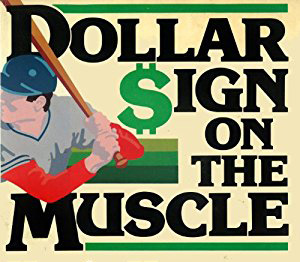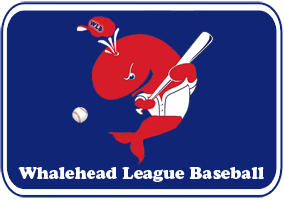
After playing the game for one season, we decided to change our update policies. Click here for updated info.
To win in the Whalehead Baseball in 2019 it will be very important, as it always has been, to have an understanding of the way our players’ true talent level (ability) is estimated in our game of choice. Since this is such a vitally important concept, I’m handling the topic very early in my tutorial series, so you can comfortably make trades to build your team.
Please make note that I’m talking about evaluation between seasons. During the season you’ll be able to check with your in-game scouts, which I will explain in a future post.
Please keep in mind, however, although I’ve spent quite a large amount of time researching OOTP over the last few months, I’m far from an expert. I present my current understanding of the game combined with the way our league is set up. Over time, as my understanding deepens, I’ll revisit this, and the other topics, in my tutorials.
How to Evaluate Players in OOTP Between Seasons
For the most part you can evaluate them the same way you have evaluated them between seasons before…pay attention to how they are playing during the current Major League Season. If you have Mookie Betts right now, you would expect him to be really, really good in Dynasty next season. Having said that, there are some differences.
The two major differences:
- Dynasty “cards” are based on a single season’s stats only. When you evaluate players for a single season you only need to pay attention to the final stats of the last year. (Of course, in our league, since I provided the actual card numbers in scouting reports, you didn’t even have to pay attention to real life at all, unless you were making a deal);
- OOTP ratings are based on Opening Day Rosters (released in March 2019). Since OOTP’s Opening Day Rosters are based on projections and OOTP’s employees’ evaluations (explained in “The Basics” below), you’ll need to evaluate players based on the last few years of play, plus consider where they are on the aging curve.
With Dynasty you looked back. With Dynasty, you look forward.
For example, I have Matt Kemp. At publication of this article, he was hitting .338/.374/.579. If he continued with those numbers till the end of the year, in Dynasty’s 2018 card set (with adjustments for park, etc.), he would be coded to hit .338/.374/.579 .
In OOTP, Kemp’s Opening Day Roster ratings wouldn’t reflect just his 2018 .338/.374/.579 stat line. Instead, his ratings would reflect a stat line of around .300/.342/.526 (a basic estimate using ZiPS 2015-2018 season weights) because, although his 2019 projections would weight his 2018 (~40%) as the most important factor, it would also weight his 2017 (~25%), 2016 (~20%), and 2015 (~15%) seasons into the calculation. Additionally, since he’ll be 34 years old in 2019, his projections would also incorporate some type of aging curve into the calculation. His numbers/ratings would be a little lower. (Young players would have the opposite dynamic. Most of them would be projected to improve, depending on their profiles.)
The weighting would work the other way too. A good player having a down year would be better than he would be in DLB. Kyle Seager, for example, was hitting .230/.279/.422 at the time of publication. Estimating his stats the same way as Kemp would give him around a .250/.313/.449 line.
So, to recap, in Dynasty all you had to worry about was a player’s previous season play. In OOTP for 2019, you’ll have to estimate how good a player will be 2019, based primarily on his last season, but also factoring in how he did in 2017, 2016 and 2015, and where he is on the aging curve. In a nut shell you will need to project his play in 2019 the same way a real GM (or a Fantasy GM would).
How Should I Evaluate Players for seasons past 2019?
In the last section I compared evaluating players in a single-season context. What about after the following season? Nothing changes. You’ll project him based on your assessment of his ability based on real life baseball. If you have Vladimir Guerrero Jr., you’ll evaluate him based on what you know about him (and how players like him progress). When the time comes, you’ll sign him to an extension based on how you expect him to play over the time frame of the extension. His 2020 season ratings will be based on OOTP 2020 Opening Day Roster ratings, so his overall progress from season-to-season will continue to be based on his real-life progression. (We won’t be carrying over any in-season development inside an OOTP season.)
The Basics of How OOTP Rates Players
Here’s what Lucas Berger (one of OOTP’s main developers) recently wrote about how they rate players:
[Our ratings are] based on ZIPS, but then we make changes to get players to fit on the rosters, start on the right levels and play in their right roles.
f.e. Triggs just based on his ZIPS projections and nothing else started off in AA in OOTP iirc.
So we use ZIPS as the base, but it’s not purely ZIPS, because if we used nothing but pure ZIPS projections, the rosters would look incredibly weird and just not be right. We’ll also sometimes make changes if guys consistently over/under-perform in our test seasons.
Another factor is that I believe the ZIPS projections we used we got directly from Dan and they were an earlier version that what you see on Fangraphs f.e. So a lot of the changes are just updates that Dan made to his projections after we’d already imported them into OOTP.
Also, as mentioned above, the ratings also come out slightly different just because of how they’re imported into the game as well. That’s especially true for pitchers.
Then there’s the issue that the pitcher’s projections are influenced by the gb% and how we calculate that is quite a bit different than how some other places do. So the out of the box pitcher projections just won’t match 100% perfectly.
So, what are ZiPS?
ZiPS is a system of player projections developed by ESPN’s Dan Szymborski when he was at Baseball Think Factory. According a Q&A on the Baseball Think Factory website, ZiPS uses growth and decline curves based on player type to find trends. It then factors those trends into the past performance of those players to come up with projections.
The system uses statistics from the previous four years for players from ages 24-38, and it weights more recent seasons heavier. For younger or older players, it uses weighted statistics from only the previous three years. The system also factors velocities, injury data and play-by-play data into its equations.
Like other projection systems, ZiPS uses past performance and aging trends to develop a future projection for players. On Fangraphs, the projections are updated daily and predict each player’s numbers over the course of the remainder of the season.
Obviously, no one is claiming that every ZiPS prediction will come true, but it is widely regarded as one of the most accurate predictors in the industry.
Dan Szymborski on Aging Curves
The initial build of ZiPS was still fairly simple relative to today’s version. It only used basic stats and had generic aging factors. As time went on, it became more complex. Various studies yielded more information on modeling various stats like BABIP, and the generic aging factors evolved first into 12 aging factors (representing general player archetypes) and finally into generating estimated aging curves on the fly using cluster analysis.
ZiPS breaks down the four-year weights at 8/5/4/3, which is equivalent to 40%/25%/20%/15%.
Steamer600
A comparable projection system to ZiPS is Steamer Projections (Excel).
Steamers’ 2019 projections have already been released. Although players won’t be exactly the same, their resulting numbers will be in the same ballpark.
To get an idea about how players will be rated next year, download and take a look.
When Non-Tenders are completed, I will update to file to include WLB teams for all 2019 MLB players and current WLB minor leaguers.
In a Nutshell
Follow players as you always have. Instead of basing the value of your players entirely on their play in the past season, however, estimate their values/ratings for next season on how you project them to play next season in real life. If you evaluate and build your team as a competent, real GM would build his team, you will do just fine. If you also craft an excellent, well-thought-out plan and execute that plan well, you can expect to see your team at the top of next year’s standings. If you fail any step of the way, you’ll find yourself on the outside looking in at playoff time.
Addendum
ZiPS uses a 8/5/4/3 weighting for batters aged between 24 and 38. It only uses the previous three years for pitchers and batters older or younger than that time frame.
For example, in 2019, a 24-38 year old player would be projected in ZiPS based on 40% 2018, 25% 2017, 20% 2017, and 15% 2016 PLUS a factor for aging. (Players generally peak around 25-26 and start to really drop off after 33.)
Additional Reading
Dan talked talked about ZiPS a little more at Fangraphs.com in 2014.
Read some of Dan’s old articles about ZiPS?

Be the first to comment